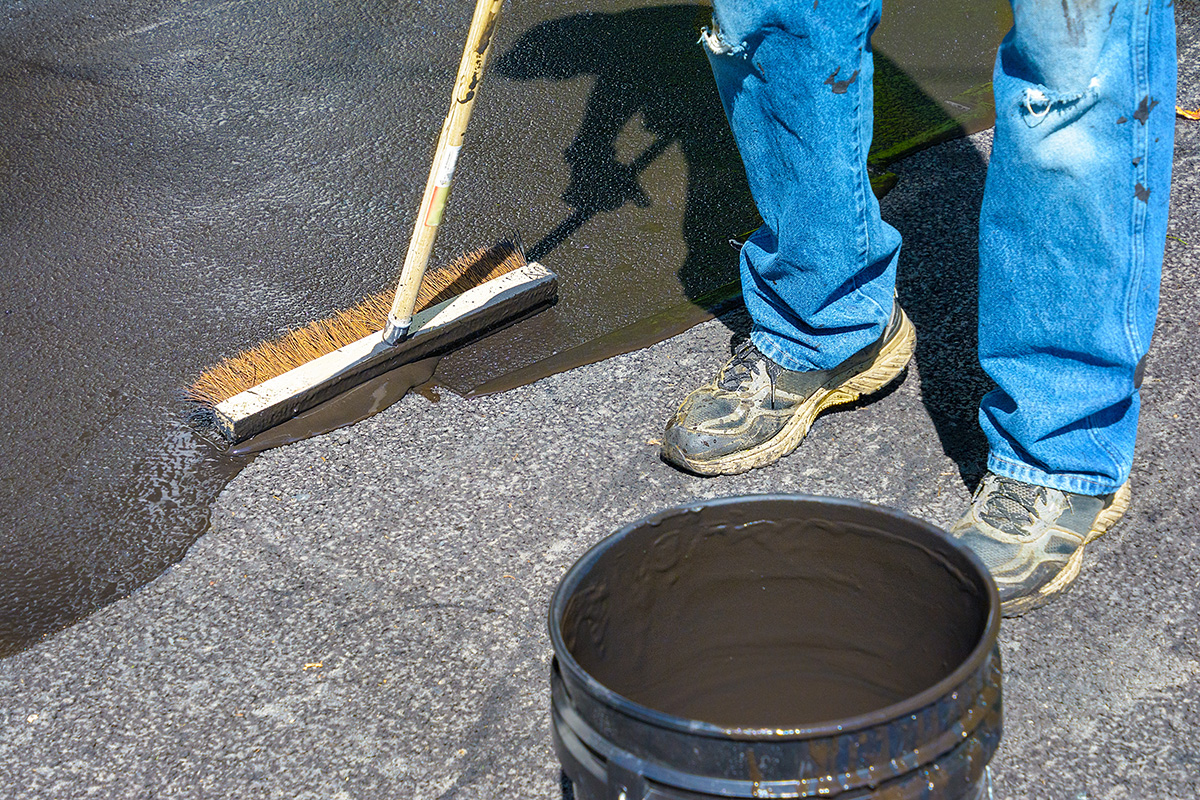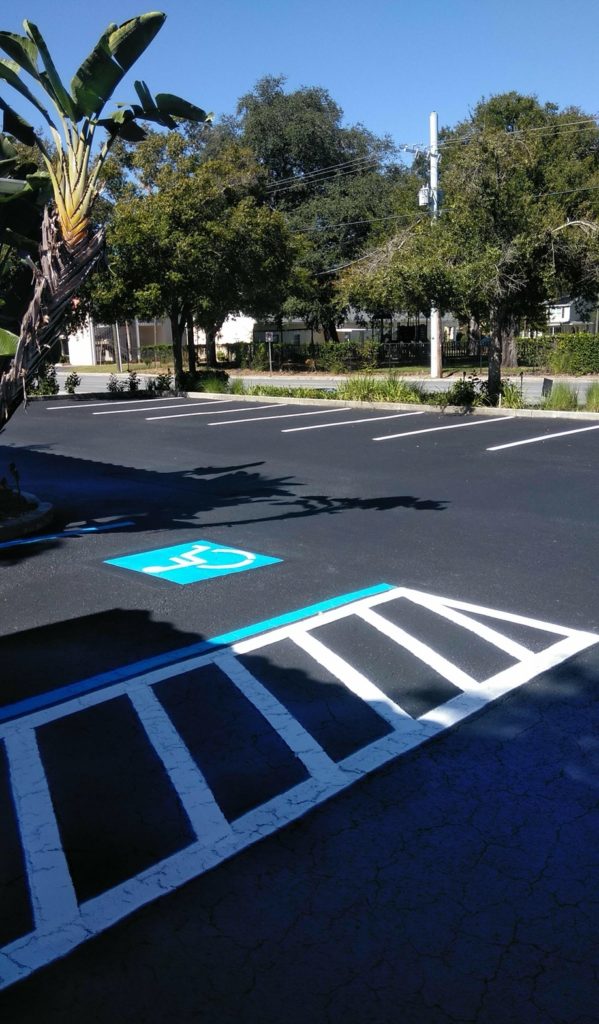Rejuvenate Your Residential Or Commercial Property with Regrading and Asphalt Sealing Methods
Rejuvenate Your Residential Or Commercial Property with Regrading and Asphalt Sealing Methods
Blog Article
Warm Mix Asphalt: A Lasting Option for Sidewalk
Warm Mix Asphalt (HMA) has arised as a leading sustainable choice for sidewalk services, using a myriad of environmental advantages and ingenious technologies. As the need for green building techniques expands, checking out the nuances of HMA's sustainability can supply valuable understandings right into the future of pavement services.
Environmental Benefits of Warm Mix Asphalt

Furthermore, Warm Mix Asphalt helps to alleviate urban warmth island impacts. Its dark color soaks up sunlight, lowering the amount of warmth showed back right into the ambience contrasted to lighter-colored pavements. This can reduce ambient temperature levels in city areas, reducing the demand for air conditioning and inevitably decreasing power usage.
In addition, Warm Mix Asphalt adds to boosted stormwater management. Its porous nature permits water to charge and penetrate the sidewalk groundwater materials, lowering drainage and the threat of flooding. These ecological advantages make Hot Mix Asphalt a sustainable option for paving highways and roads.
Energy Efficiency in HMA Production
Is energy efficiency an important consider the manufacturing of Warm Mix Asphalt (HMA)? Definitely. Power plays a substantial duty in the manufacturing of HMA, affecting both expense and environmental sustainability. One essential aspect of energy efficiency in HMA manufacturing is the usage of cozy mix asphalt (WMA) innovations (commercial parking lot paving). WMA permits for the blending and positioning of asphalt at reduced temperatures compared to traditional hot mix asphalt, causing lowered power intake throughout manufacturing. This process not just reduces gas usage however also lowers greenhouse gas emissions, making it a much more eco friendly option.
Moreover, developments in plant modern technologies have led to even more energy-efficient HMA manufacturing procedures. Modern plants are developed with features like recycled asphalt pavement (RAP) handling abilities, reliable burner systems, and boosted insulation, all adding to power cost savings. By maximizing energy use in HMA production, the market can lower its carbon footprint while preserving top quality sidewalk products. Energy effectiveness is, therefore, a critical consideration in making certain the sustainability of Warm Mix Asphalt production.
Recyclability of Warm Mix Asphalt
The recyclability of Hot Mix Asphalt (HMA) is a pivotal facet of its sustainability and long-lasting ecological influence. HMA is one of the most recycled materials in the United States, with over 100 million lots of redeemed asphalt pavement (RAP) being reused yearly in brand-new sidewalk building and construction. Reusing HMA provides several ecological benefits, such as lowering the need for virgin materials, lowering energy usage during manufacturing, and lowering the quantity of waste sent out to land fills.
The procedure of recycling HMA entails crushing the existing sidewalk, crushing it right into smaller pieces, and blending it with brand-new accumulation and asphalt binder to create a recycled mix. This recycled mix can usually carry out along with or even much better than standard HMA, while requiring less raw materials and producing reduced greenhouse gas exhausts. By including RAP into brand-new pavement jobs, road agencies can conserve all-natural sources, minimize expenses, and reduce the environmental footprint of roadway construction and maintenance activities. In general, the recyclability of HMA plays a substantial role in promoting sustainable techniques within the pavement industry.

Long-Term Performance of HMA
Asphalt pavements show durability and resilience over a prolonged period, showing the long-term performance of Hot Mix Asphalt (HMA) The durability of HMA can be associated to its capability to stand up to rush hour loads, harsh climate condition, and the results of aging. Studies have revealed that properly designed and appropriately built HMA pavements can last for 20 years or more with normal upkeep. The secret to making the most of the lasting performance of HMA hinges on making use of high-grade products, complying with best techniques in building and construction, and carrying out efficient upkeep strategies. Appropriate water drainage, routine examinations, and timely repair services are essential for protecting the architectural honesty of HMA pavements over time. In addition, developments in HMA technology, such as making use of polymer-modified binders and warm mix asphalt, have actually additionally enhanced the longevity and durability of HMA pavements. By focusing on quality building and construction and maintenance techniques, HMA remains to show itself as a lasting and cost-efficient remedy for lasting important source pavement facilities.

HMA: Sturdiness and Sustainability
Demonstrating both longevity and sustainability, Hot Mix Asphalt (HMA) has actually come to be a foundation in the construction of long-lasting sidewalk frameworks - hot mix asphalt. HMA's longevity comes from its capability look at this website to withstand hefty tons, harsh weather, and high web traffic quantities, making it a reputable choice for roadways, freeways, and flight terminal paths. The make-up of HMA, which generally includes aggregates, binder, and filler, plays a critical role in improving its long life and resistance to wear and tear
In addition, HMA's sustainability lies in its recyclability and energy-efficient manufacturing procedure. The capability to recycle recovered asphalt pavement (RAP) in new HMA blends reduces the demand for virgin materials and lessens the ecological impact of pavement building and upkeep. In addition, the power efficiency of producing HMA depends on its lower blending temperature levels contrasted to various other pavement products, bring about minimized power consumption and greenhouse gas emissions.
Conclusion
In conclusion, warm mix asphalt (HMA) uses a lasting option for sidewalk with its eco-friendly characteristics. HMA's recyclability, energy performance in manufacturing, and long-lasting sturdiness make it an eco-friendly choice for roadway building and construction. By conserving all-natural resources, reducing waste, and decreasing greenhouse gas discharges, HMA plays an essential duty in advertising sustainability in facilities development. Its ability to mitigate city warmth island impacts even more underscores its significance in creating resilient and eco aware pavement systems.
HMA is one of the most recycled materials in the United States, with over 100 million lots of reclaimed asphalt sidewalk (RAP) being recycled annually in new sidewalk construction.The process of reusing HMA involves crushing the existing pavement, squashing it right into smaller sized items, and mixing it with brand-new accumulation and asphalt binder to develop a recycled mix.Asphalt sidewalks demonstrate durability and strength over a prolonged duration, reflecting the lasting performance of Warm Mix Asphalt (HMA) In addition, improvements in HMA technology, such as the use of polymer-modified binders and cozy mix asphalt, angled parking have additionally enhanced the toughness and longevity of HMA pavements. The capability to recycle reclaimed asphalt sidewalk (RAP) in brand-new HMA mixes minimizes the need for virgin products and minimizes the ecological influence of sidewalk building and construction and upkeep.
Report this page